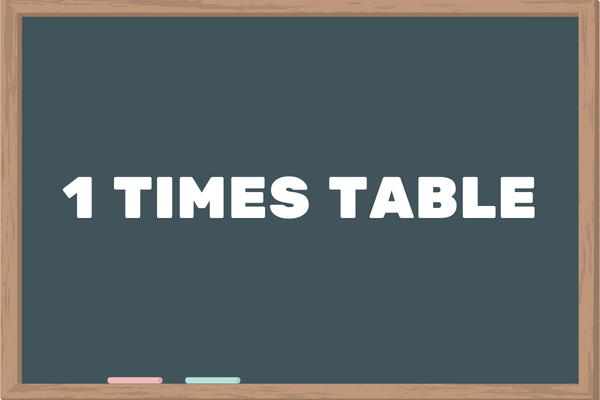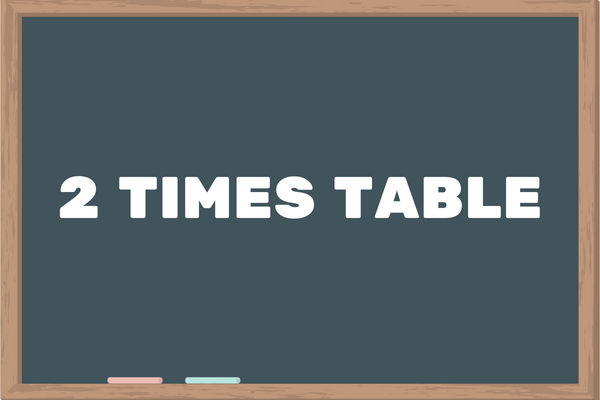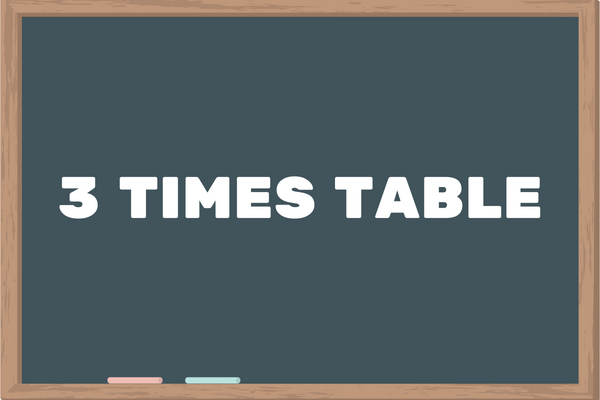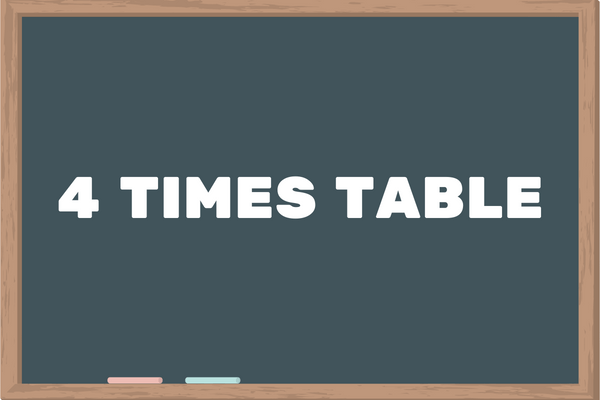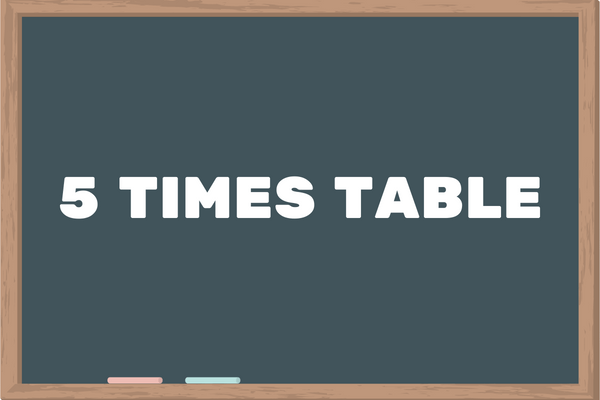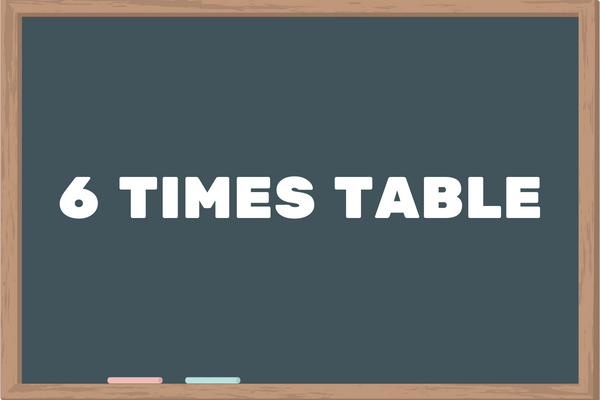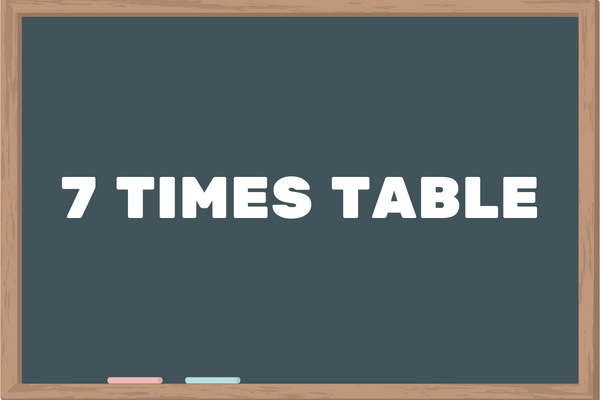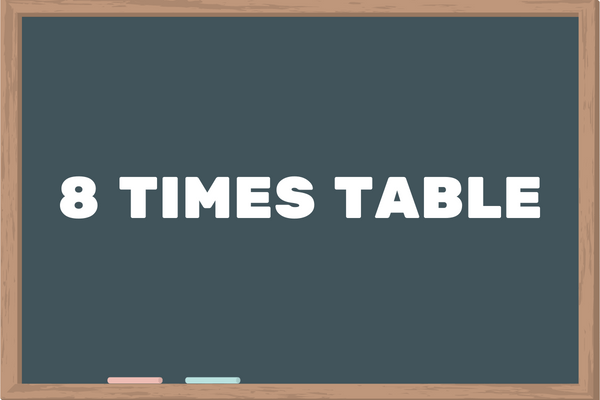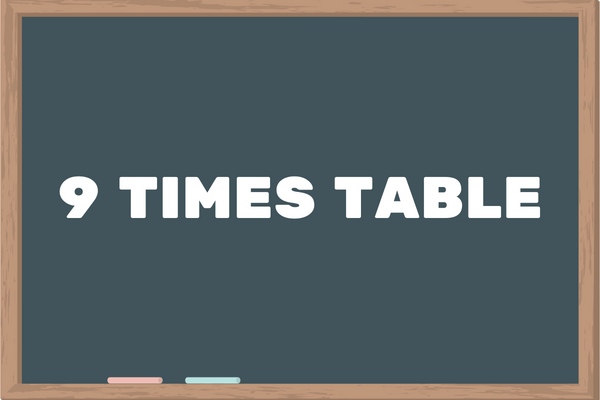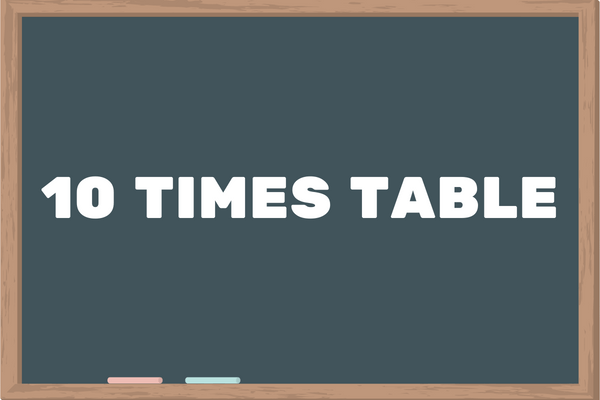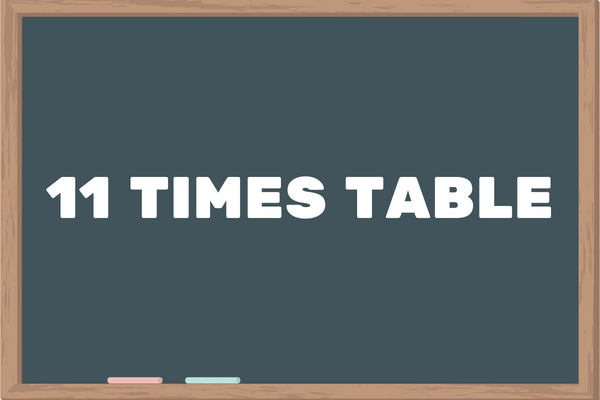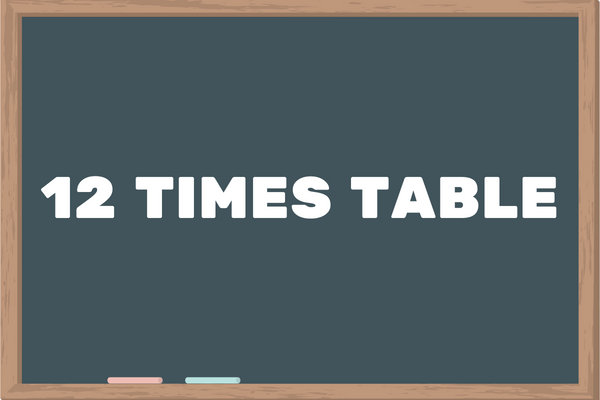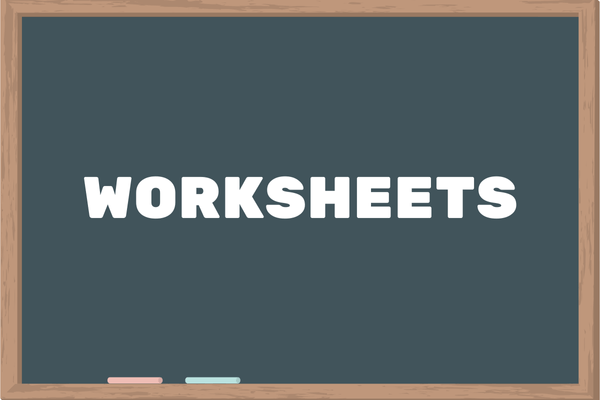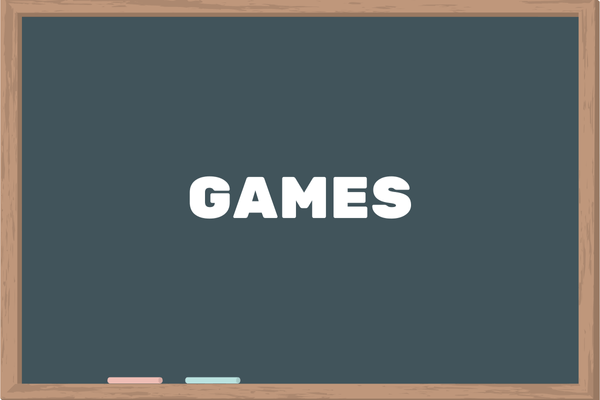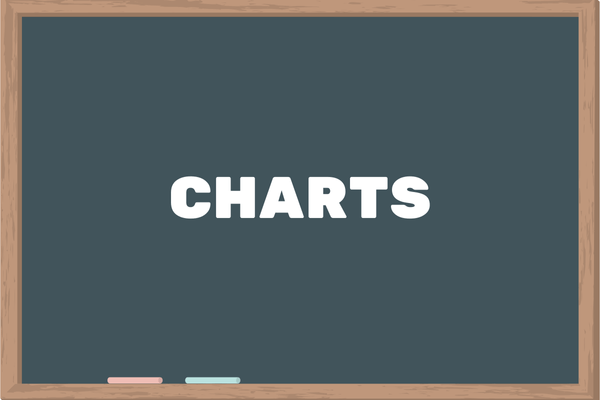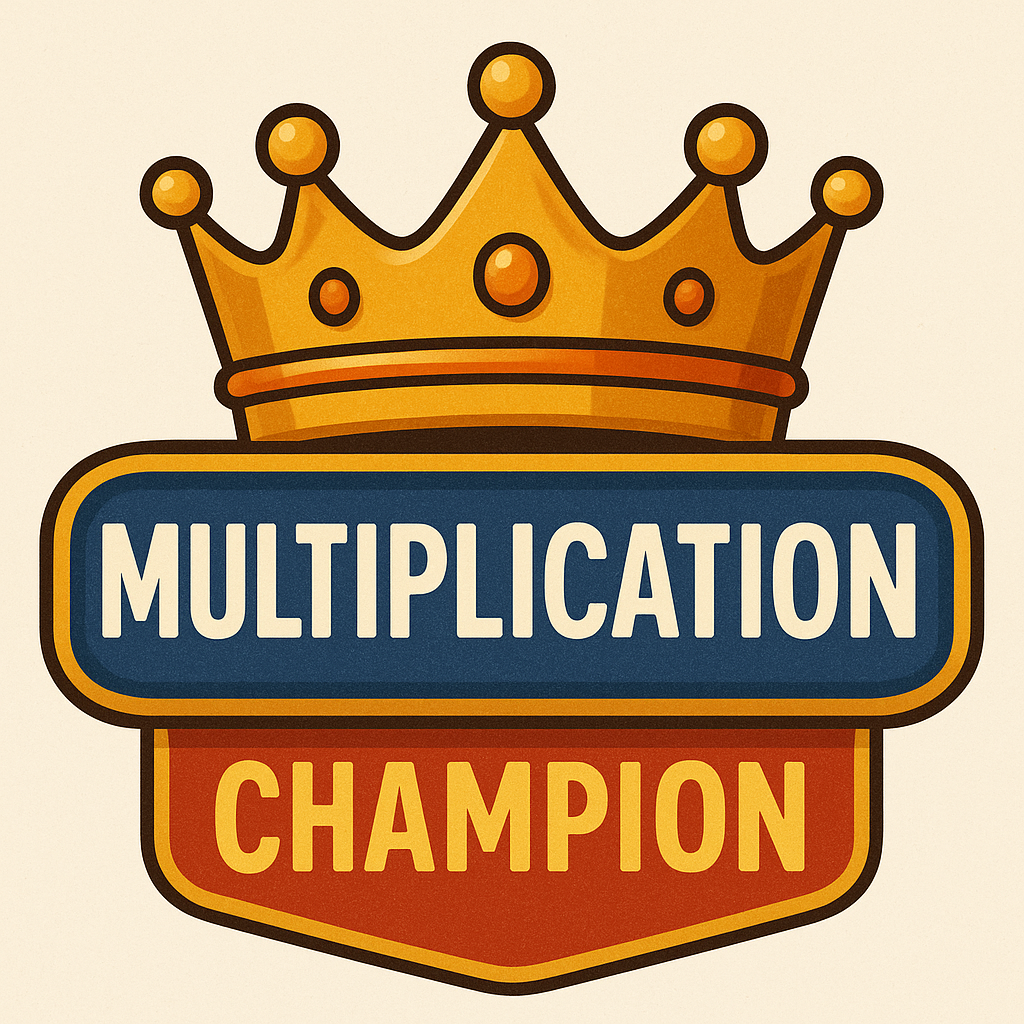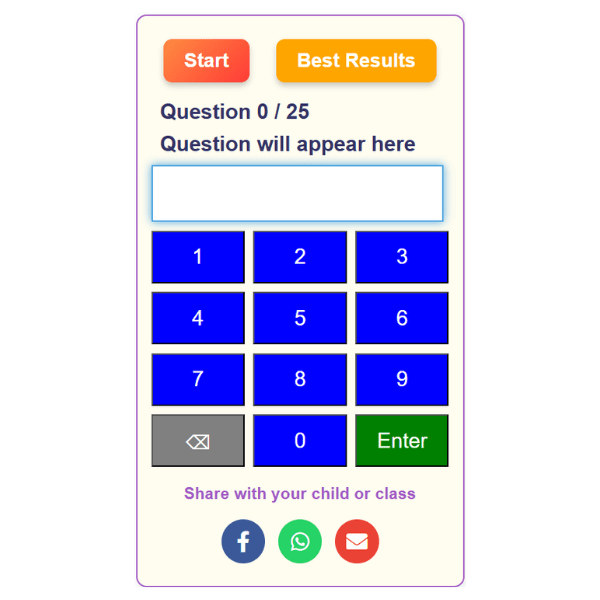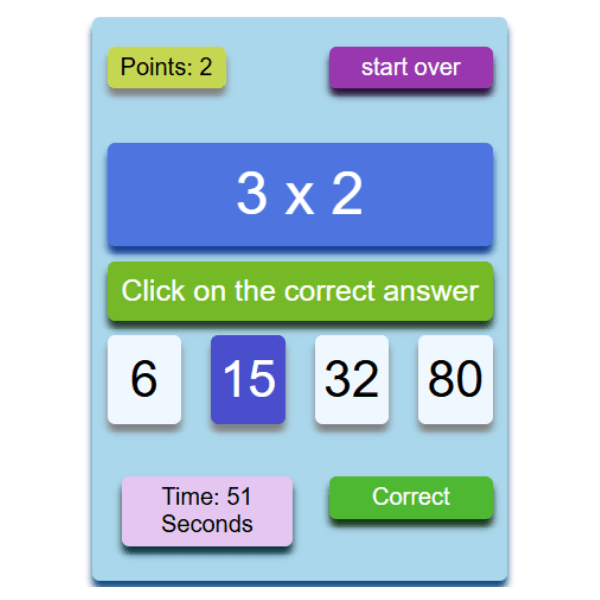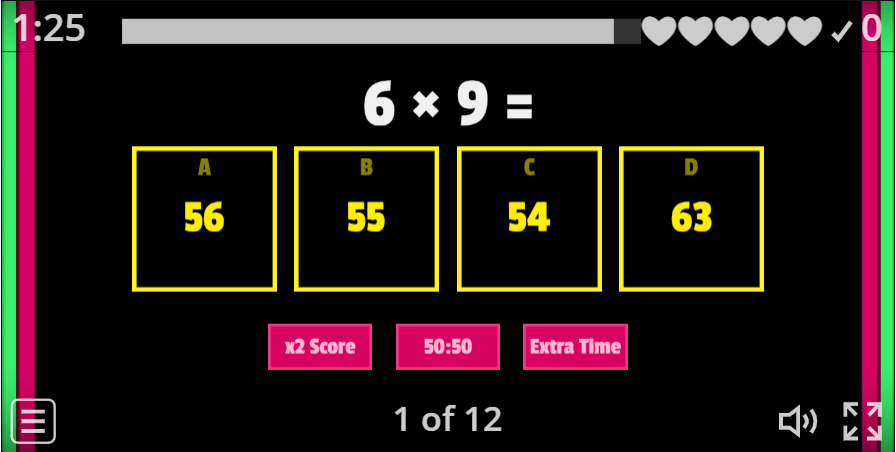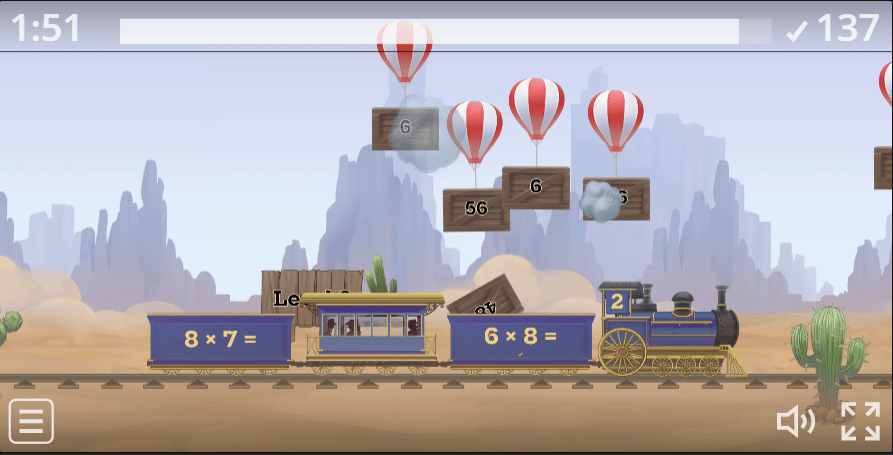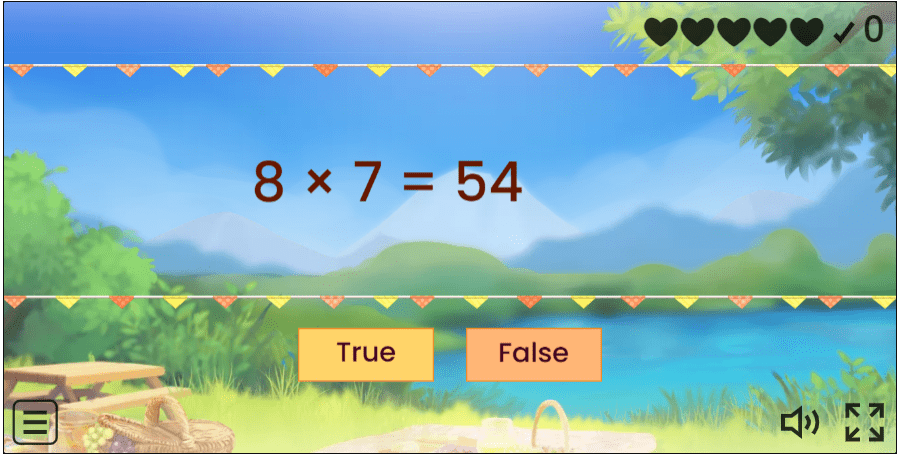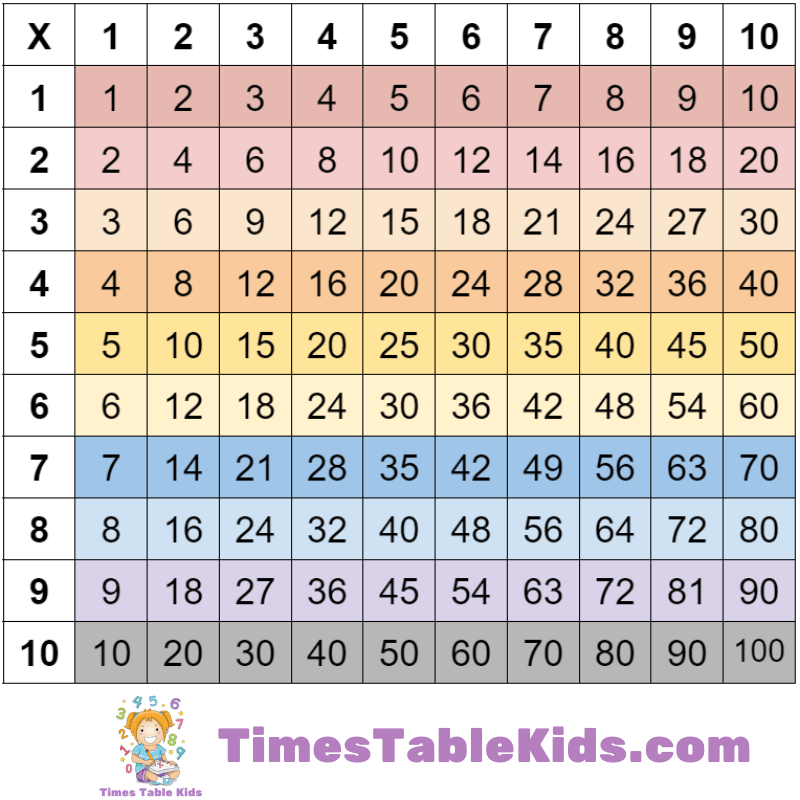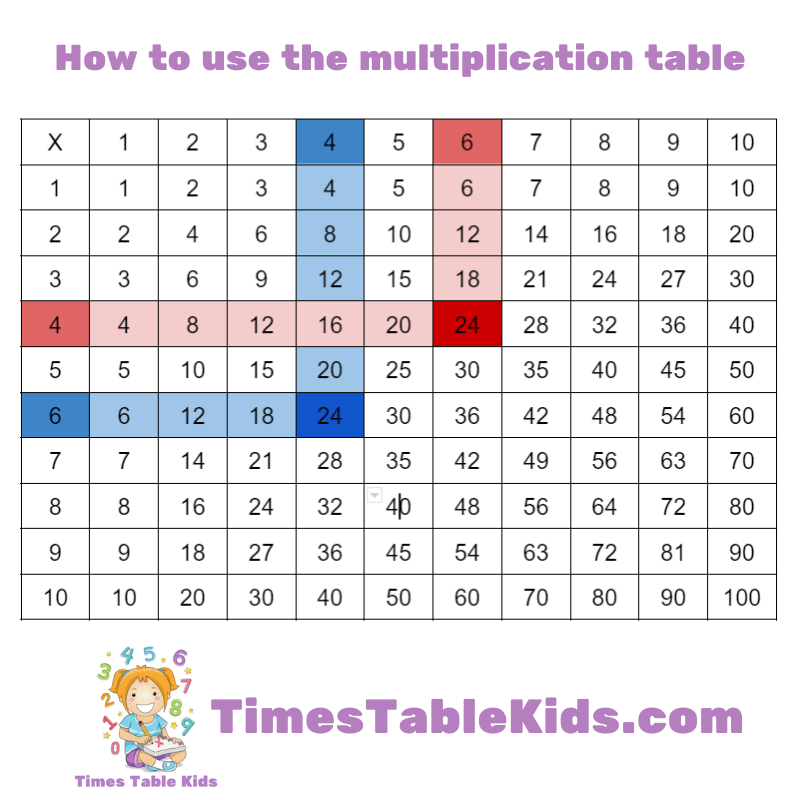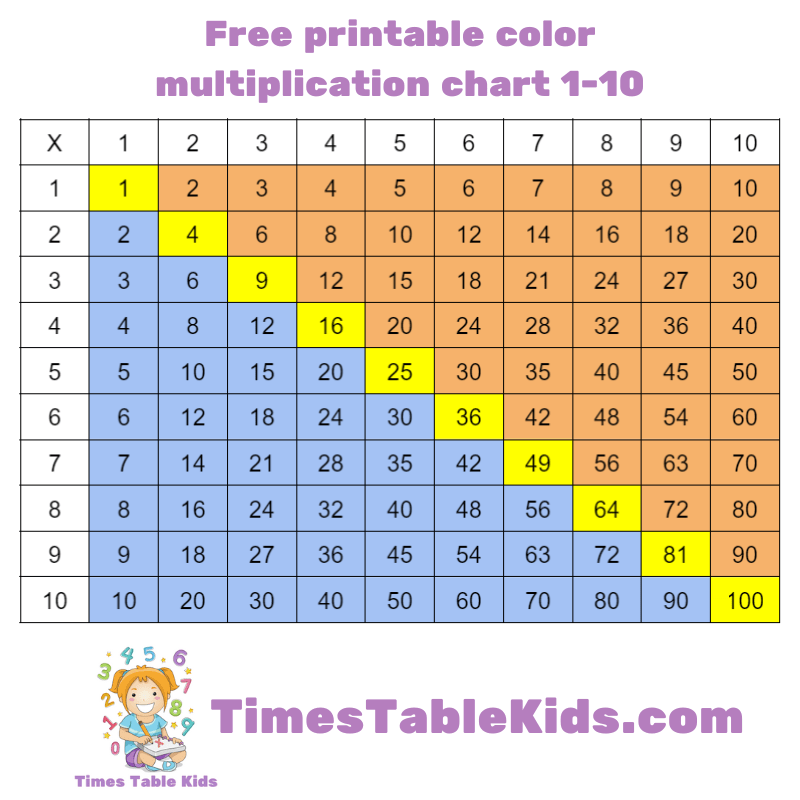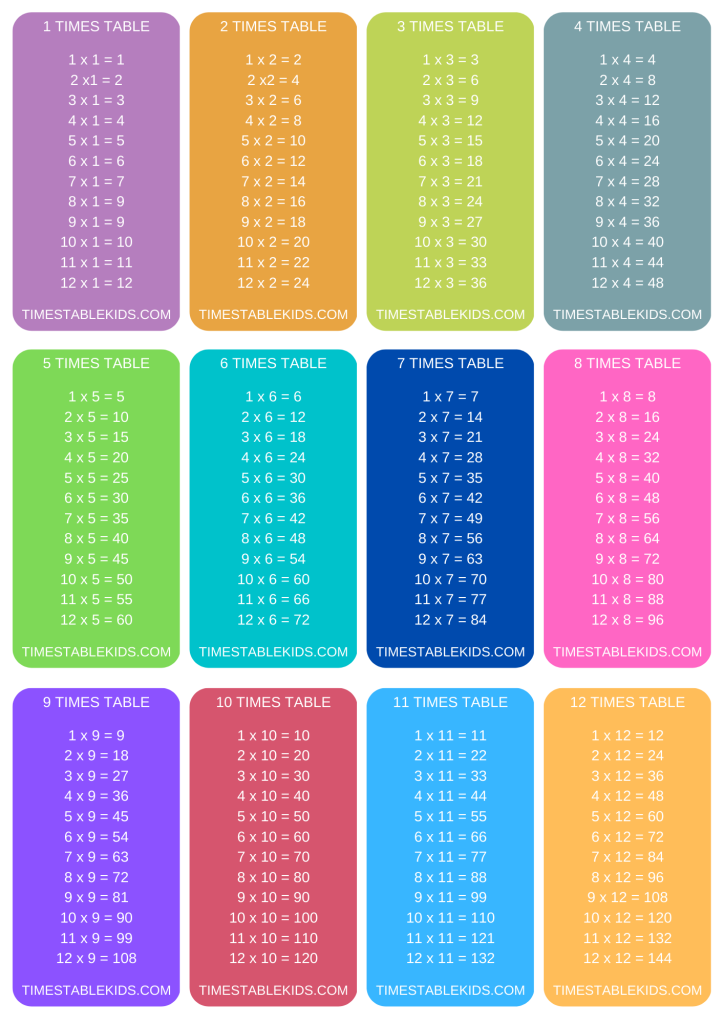Start Learning Multiplication – Tables, Games, and Practice
Times Tables AI Tutor
Explore Times Tables AI Tutor at no cost, and sign up now to unlock exclusive early‐bird access to Pro!
Practice & Test Your Multiplication Skills
Fun Multiplication Games
What is multiplication?
The multiplication operation is marked with an x and means a repeated operation of addition (+).
For example, 6X8 (say: “6 times 8”) is equal to 6 times 8, ie
6×8 = 8+8+8+8+8+8
In the multiplication exercise, the first factor is called the multiplier and the second factor is called the multiplicand. The result of the multiplication operation is called a product. For example, in an exercise
4×9=36
The multiplier is 4, the multiplicand is 9 and the product is 36.
What is the multiplication table?
The multiplication table is a table with 10 columns and 10 rows, which includes all the multiplication exercises from 1 to 10. A total of 100 multiplication exercises and their results. Some people learn the multiplication table up to 12 instead of up to 10.
Characteristics of the multiplication operation:
Every number multiplied by 1 is equal to the number itself. For example, 7X1=7.
The order of the numbers in multiplication exercises does not change the result, so you can calculate the exercise in any order you want. For example, 3×4=4×3
Another accepted notation for the multiplication operation is the dot sign. For example, 9ᐧ2=9X2
The opposite of multiplication is division.
How to use the multiplication table?
If you want to know the product of two numbers, cross the row of the first number and the column of the second number. The slot where the row and column meet is the result.
Since the order of the numbers in the multiplication does not matter, you get 2 squares in the table with the same result.
For example, we will look in the table for the product of 4 and 6 like this:
The two colors indicate the two possibilities of the product: 6×4 or 4×6. As you can see in the table, both options reach the same result: 24. Hence, 6X4=4X6=24.
Since the order of the numbers in multiplication exercises does not matter, almost all exercises appear in the table twice (except for the exercises where a number is multiplied by itself, such as 5×5). If we mark the diagonal in the table, we will find that the part below the diagonal is actually a reflection of the part above the diagonal, that is, if we fold the table on the diagonal, each number will be above the corresponding number.
How to learn the multiplication table?
To learn the multiplication table easily and quickly, break the multiplication table into multiples of 1, multiples of 2, and so on. It is recommended to first learn the easy multiples (in this order): multiples of 1, multiples of 2, multiples of 5 and multiples of 10. Then, learn multiples of 3 and multiples of 4. And finally learn multiples of 6, multiples of 7, multiples of 8 and multiples of 9.
At any stage, you should move to the next multiple only after you know the previous multiple well.
After mastering all the multiples from 1 to 12, take the Multiplication Table Check to test yourself and practice.
1 times table
In multiples of 1, we count groups of 1. For example, 6×1 equals 6 times 1
6×1 = 1+1+1+1+1+1 = 6
Method for calculating multiples of 1:
Every number multiple of 1 is equal to itself.
For example, 7×1=7
2 times table
In multiples of 2 we count pairs, that is, groups of 2.
For example, 5×2 equals 5 times 2
5×2 = 2+2+2+2+2 = 10
How to easily calculate multiples of 2?
Method 1: Every number times 2 equals twice the same number (the number plus itself).
for example,
8×2=8+8=16
Method 2: Count even numbers from the 2nd digit onwards.
For example, in the 4×2 exercise we will count 4 even numbers: 2, 4, 6, 8. We reached the number 8 and this is the answer. You can use your fingers to know when to stop counting.
If it is difficult to remember the even numbers, you can count normally and raise one finger for every two numbers, that is, raise one finger and say “one, two”, raise another finger and say “three, four”, and so on.
Interesting to know
Multiples of 2 are the set of even numbers. In fact, any even number is divisible by 2 with no remainder.
3 times table
In multiples of 3, we count triplets, i.e. groups of 3.
For example, 4×3 equals 4 times 3
4×3 = 3+3+3+3 = 12
How do you easily calculate multiples of 3?
Method 1: Any number times 3 is equal to 3 times the same number.
for example,
6×3=6+6+6=18
Method 2: When you want to calculate a number multiple of 3, raise your fingers according to the number shown in the exercise and count 3 numbers to each finger. The last number we reached in the count is the result.
For example, to calculate 4×3, you hold up 4 fingers and start counting like this: 1, 2, 3 for the first finger, 4, 5, 6 for the second finger, 7, 8, 9 for the third finger, 10, 11, 12 for the last finger. We reached 12 and this is the answer.
Interesting to know
Multiples of 3 are numbers whose sum of digits is divisible by 3. This fact can be used to know whether any number is a multiple of 3 or not. For example, the sum of the digits of the number 102 is 1+0+2=3. Therefore, the number 102 is a multiple of 3.
4 times table
In multiples of 4, we count fours, i.e. groups of 4.
For example, 3×4 equals 3 times 4
3×4 = 4+4+4 = 12
How do you easily calculate multiples of 4?
Method 1: Any number double 4 is equal to 4 times that number. For example, in the 4×6 exercise, the number 6 appears and we get:
6×4=6+6+6+6=24
Method 2: When you want to calculate an exercise with a number that is multiple of 4, raise your fingers according to the number that appears in the exercise and count 4 numbers to each finger. The last number we reached in the count is the result.
For example, to calculate 2×4, hold up 2 fingers, and start counting like this: 1, 2, 3, 4 for the first finger, 5, 6, 7, 8 for the second finger. We reached 8 and this is the answer.
Method 3: Multiplication by 2 can be calculated twice instead of multiplication by 4.
Interesting to know
Multiples of 4 are even numbers, meaning their unity digit belongs to the group: 0, 2, 4, 6, 8.
5 times table
In multiples of 5 we count fives, that is, groups of 5.
For example, 7×5 equals 7 times 5
7×5 = 5+5+5+5+5+5+5 = 35
How do you easily calculate multiples of 5?
Multiples of 5 are easy to remember by heart. Remember the series of fives:
5, 10, 15, 20, 25, 30, 35, 40, 45, 50
When you want to calculate an exercise, raise the number of fingers as shown in the exercise and count the series, a number for each finger, until you reach the last raised finger. The number we arrived at is the answer.
For example, we will solve the 4×5 exercise. The number 4 appears in the exercise, so raise 4 fingers. Let’s count like this: 5 for the first finger, 10 for the second finger, 15 for the third finger, and 20 for the fourth finger. We reached 20 and this is the answer.
4 x 5 = 20
Interesting to know
Multiples of 5 are numbers whose unity digit is 0 or 5.
6 times table
In multiples of 6 we count sixes, that is, groups of 6.
For example, 3×6 equals 3 times 6
3×6 = 6+6+6 = 18
How do you easily calculate multiples of 6?
Method 1: When you want to calculate an exercise with a number that is multiple of 6, you can calculate the same exercise, but with 5 instead of 6 and add the number that appears in the exercise.
for example,
4×6=(4×5)+4=20+4=24
Method 2: It is possible to remember multiples of 6 in order. Start from the number 6 and add 6 each time. Get the series:
6, 12, 18, 24, 30, 36, 42, 48, 54, 60
When there is an exercise that involves multiplying by 6, raise your fingers according to the number that appears in the exercise and say the multiples in order, a multiple for each finger.
For example, to calculate 5×6, lift 5 fingers and count as follows: 6 for the first finger, 12 for the second finger, 18 for the third finger, 24 for the fourth finger, and 30 for the fifth finger. We reached 30 and this is the answer.
Interesting to know
Multiples of 6 are even numbers, meaning their unity digit belongs to the group: 0, 2, 4, 6, 8.
7 times table
In multiples of 7 we count sevens, that is, groups of 7.
For example, 6×7 equals 6 times 7
6×7 = 7+7+7+7+7+7 = 42
How do you easily calculate multiples of 7?
Method 1: To calculate an exercise involving multiplication by 7, you can calculate the same exercise, but with 5 instead of 7 and add the number that appears in the exercise twice.
for example,
3×7=(3×5)+3+3=15+6=21
Method 2: Multiples of 7 can be remembered in order. Start from the number 7 and add 7 each time. Get the series:
7, 14, 21, 28, 35, 42, 49, 56, 63, 70
When there is an exercise that involves multiplying by 7, raise your fingers according to the number that appears in the exercise and say the multiples in order, a multiple for each finger.
For example, to calculate 4×7, hold up 4 fingers and count as follows: 7 for the first finger, 14 for the second finger, 21 for the third finger, and 28 for the fourth finger. We reached 28 and this is the answer.
8 times table
In multiples of 8 we count eights, that is, groups of 8.
For example, 3×8 equals 3 times 8
3×8 = 8+8+8 = 24
How do you easily calculate multiples of 8?
To calculate an exercise involving multiplication by 8, we will look at the number that appears in the exercise. If it is less than or equal to 5 (between 1 and 5), we subtract 1. If it is greater than 5 (between 6 and 10), we subtract 2. The number we get is the tens digit in the product.
To calculate the unity digit, raise your fingers according to the number shown in the exercise and count back even numbers from 8 to 0 as the number of raised fingers. If we reached 0, we will count again from 8.
For example, we will calculate the exercise 8×7 .
In the exercise, the number 7 appears. Since it is greater than 5, we will subtract 2 and get:
7-2=5
Therefore, 5 is the tens digit in the product.
Now, we will calculate the unity digit. Lift 7 fingers and count backward like this: 8 for the first finger, 6 for the second finger, 4 for the third finger, 2 for the fourth finger, 0 for the fifth finger, 8 for the sixth finger, and 6 for the seventh finger. We reached 6, so the unity digit is 6.
In conclusion,
7×8=56
Interesting to know
Multiples of 8 are even numbers, meaning their unity digit belongs to the group: 0, 2, 4, 6, 8.
9 times table
In multiples of 9 we count nines, that is, groups of 9.
For example, 4×9 equals 4 times 9
4×9 = 9+9+9+9 = 36
How to easily calculate multiples of 9?
To calculate an exercise involving multiplication by 9, we will look at the number that appears in the exercise. We subtract 1 from it, and the number we get is the tens digit in the product.
To calculate the one’s digit, we will subtract from 9 the number we got in the tens digit calculation. The number we get is the unity digit in the product.
For example, we will calculate the exercise 9×7 .
In the exercise, the number 7 appears. We will subtract one from it and get:
7-1=6
Therefore, the number 6 is the tens digit in the product.
Now, we will calculate the unity digit. We will subtract 6 from 9 and get:
9-6=3
Therefore, the number 3 is the unity digit in the product.
In conclusion,
7×9=63
Interesting to know
Multiples of 9 are numbers whose sum of digits is 9. For example, the sum of the digits of the number 81 is 8+1=9, therefore 81 is a multiple of 9.
10 times table
In multiples of 10 we count tenths, that is, groups of 10.
For example, 6×10 equals 6 times 10
6×10 = 10+10+10+10+10+10 = 60
How to easily calculate multiples of 10?
To calculate an exercise involving multiplication by 10, simply add 0 to the right of the number appearing in the exercise.
For example, we will calculate the exercise 10×8 . In the exercise, the number 8 appears. We will add 0 to it on the right and get the number 80. Therefore,
8 x 10 = 80
Interesting to know
Multiples of 10 are numbers whose unit digit is 0.
11 times table
In multiples of 11, we count groups of 11.
For example, 5×11 is equal to 5 times 11
5×11 = 11+11+11+11+11 = 55
How to easily calculate multiples of 11?
To calculate an exercise that involves multiplying by 11, simply write twice the number that appears in the exercise.
For example, we will calculate the exercise 4×11. In the exercise the number 4 appears, therefore we will write the number 4 twice and get 44.
4 x 11 = 44
This method works until 9. After that, you have to remember the 3 exercises:
10×11=110
11×11=121
12×11=132
How will we remember them?
11×10 is easy to remember according to the method of multiplying by 10 (just add 0).
11×11 can be remembered like this: the answer is 11 with a 2 in the middle.
It is also possible to calculate 10×11 according to the method of multiples by 10 and add 11 to the result like this:
11×11=10×11+11=110+11=121
11×12 is easy to remember according to the method of multiplying by 12 (in multiples of 12).
Interesting to know
Three-digit multiples of 11 are numbers whose middle digit is the sum of the other two digits. For example, the number 121 is a multiple of 11, because the middle number is 2 and is the sum of the other two digits 1+1=2.
12 times table
In multiples of 12 we count groups of 12.
For example, 4×12 equals 4 times 12
4×12 = 12+12+12+12 = 48
How to easily calculate multiples of 12?
In every multiplication exercise in which 12 appears, we will take the number multiplied by 12 and calculate an addition exercise of the number multiplied by 10 and twice the number.
For example, we will calculate the exercise 6×12. Instead of calculating the multiplication exercise, calculate the addition exercise:
6×12 = 60 + 6 + 6 =72
Another example, we will calculate the exercise 11×12 and get:
11×12 = 110+ 11 + 11 =132
Interesting to know
Multiples of 12 are even numbers, meaning their unity digit belongs to the group: 0, 2, 4, 6, 8.

